How to Fertilize Bougainvillea: A Complete Guide for Stunning Blooms
- April 10, 2024
- 3 comment
Discover expert tips on how to fertilize bougainvillea for vibrant blooms. Learn the best practices for lush growth and stunning floral displays. Bougainvillea, with its vibrant colors and lush growth, is a favorite among garden enthusiasts worldwide. The key to unlocking its full potential lies not just in the warmth of the sun or the richness of the soil, but in a comprehensive approach to fertilization.
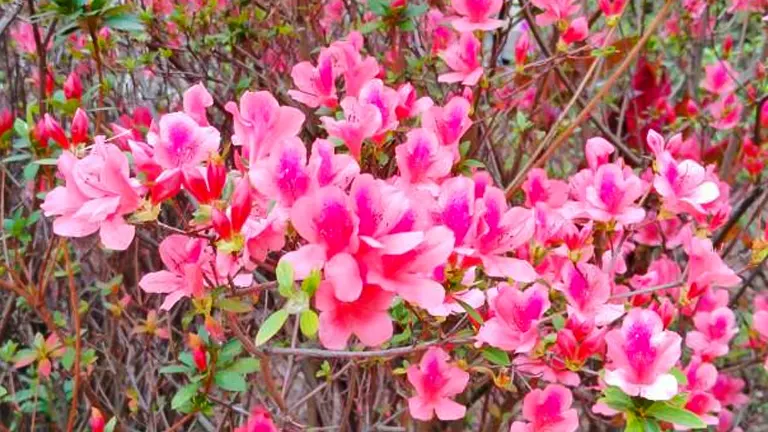
This guide will walk you through the essential steps to ensure your bougainvillea not only thrives but dazzles with stunning blooms.
Table of Contents
- Understanding Bougainvillea’s Nutritional Needs
- Choosing the Right Fertilizer
- Planting Bougainvillea: Density and Spacing
- The Best Time to Fertilize Bougainvillea
- How to Fertilize Bougainvillea
- Pruning Techniques for Bougainvillea
- Aftercare and Maintenance
- Maximizing Blooms: Beyond Fertilization
- Conclusion
- FAQs
Understanding Bougainvillea’s Nutritional Needs
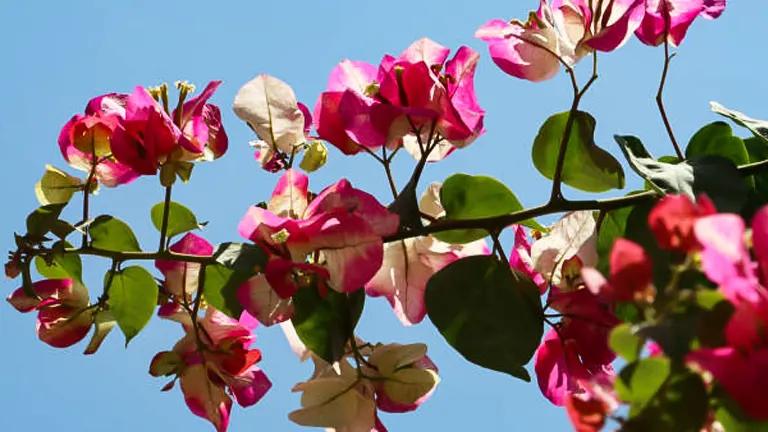
Bougainvillea, a genus known for its spectacular floral displays and vigorous growth, demands a nuanced approach to nutrition that balances three primary macronutrients: Nitrogen (N), Phosphorus (P), and Potassium (K). The optimal absorption and utilization of these nutrients are pivotal for the plant’s health, growth rate, and the flamboyance of its blooms.
- Nitrogen (N) is fundamental for chlorophyll production, the green pigment responsible for photosynthesis. It promotes the growth of lush, green leaves, creating a vibrant backdrop for the colorful bracts. In bougainvillea, nitrogen supports rapid growth, but an optimal N ratio is crucial; excessive nitrogen can lead to lush foliage at the expense of blooms.
- Phosphorus (P) is key to energy transfer within the plant, crucial for the development of roots and blooms. It stimulates bud formation and is instrumental in converting solar energy to chemical energy, aiding in efficient photosynthesis. Phosphorus supports the plant’s ability to withstand environmental stress, enhancing bloom resilience and color intensity.
- Potassium (K), often referred to as the “quality nutrient,” plays a multifaceted role. It regulates water use through stomatal opening and closing, thereby improving drought resistance. Potassium is also involved in the activation of enzymes and the synthesis of proteins and starches, contributing to the overall health and disease resistance of bougainvillea.
Recognizing Nutritional Deficiencies
- Nitrogen Deficiency: Manifests as chlorosis, where leaves turn yellow while veins remain green, leading to reduced growth and vigor.
- Phosphorus Deficiency: Results in stunted growth and dark, dull, or purplish foliage, with a significant reduction in bloom production.
- Potassium Deficiency: Exhibits as edge necrosis (browning of leaf edges) and interveinal chlorosis, making the plant more susceptible to disease and drought stress.
Scientific Analysis and Nutrient Ratios
For enthusiasts and readers with a nerdy mindset, understanding the scientific basis of nutrient application can significantly enhance bougainvillea care. Here’s a table outlining the ideal NPK ratios and their impact on bougainvillea health:
| Nutrient | Ideal Ratio | Function | Deficiency Symptoms |
|---|---|---|---|
| Nitrogen (N) | 1:1:1 to 1:2:2 | Supports foliage growth and photosynthesis. | Chlorosis, stunted growth |
| Phosphorus (P) | 1:2:1 to 1:3:1 | Encourages root development and bloom production. | Dark, dull foliage, poor blooms |
| Potassium (K) | 1:1:1 to 1:2:2 | Regulates water use, enzyme activation, and improves stress resistance. | Edge necrosis, chlorosis |
The ratios provided offer a starting point, but it’s important to adjust based on the plant’s response and growing conditions. Soil tests can offer precise insights into existing nutrient levels, allowing for targeted fertilization strategies.
Advanced Tips
- Utilize slow-release fertilizers to provide a steady supply of nutrients over time, mimicking the natural feeding cycle of bougainvillea.
- Incorporate organic matter into the soil. Composts and organic fertilizers not only supply essential nutrients but also improve soil structure, enhancing root health and water/nutrient uptake.
- Monitor soil pH, aiming for a slightly acidic to neutral range (pH 5.5 to 7.0). Soil pH can significantly affect nutrient availability, with extreme conditions locking certain nutrients out of plant reach.
Choosing the Right Fertilizer
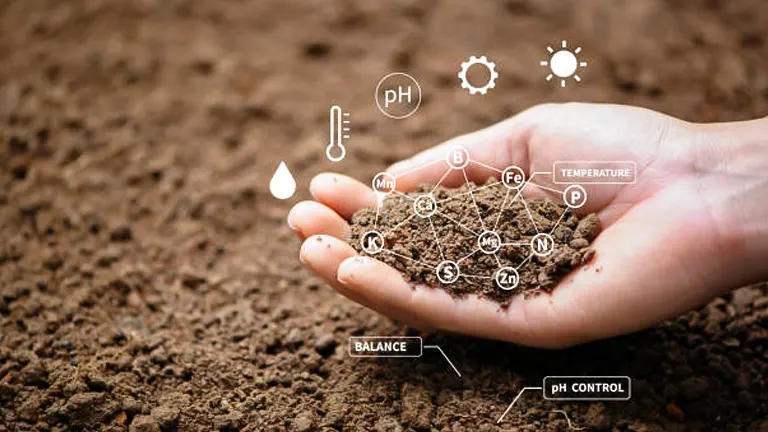
Selecting an ideal fertilizer for bougainvillea is more than a routine gardening decision—it’s a critical factor that influences the health, vigor, and bloom intensity of this vibrant plant. Understanding the nuanced benefits of organic versus synthetic fertilizers, along with the significance of NPK ratios, can empower gardeners to make informed choices.
Organic Fertilizers: These are derived from natural sources such as compost, manure, bone meal, and seaweed. Organic options not only supply essential nutrients gradually, mirroring nature’s rhythm, but also enhance soil structure and microbial life. This slow-release mechanism reduces the risk of nutrient runoff and over-fertilization, fostering a more sustainable gardening practice.
- Benefits: Enhances soil health, promotes beneficial microbial activity, environmentally friendly.
- Drawbacks: Nutrient release is slower and less predictable, initial nutrient concentrations may be lower.
Synthetic Fertilizers: Engineered for efficiency, synthetic fertilizers provide targeted nutrient ratios with immediate availability. These formulations can swiftly correct nutrient deficiencies and support rapid growth and flowering.
- Benefits: Fast nutrient release, precise NPK ratios, immediate impact on plant health.
- Drawbacks: Higher risk of over-fertilization and environmental runoff, may degrade soil health over time.
Ideal NPK Ratios for Bougainvillea
For bougainvillea, the NPK ratio—a measure of the relative amounts of Nitrogen (N), Phosphorus (P), and Potassium (K)—is a pivotal consideration. An ideal fertilizer supports robust growth while prioritizing bloom production. A higher phosphorus content is recommended, as it directly supports root development and flower formation.
| Element | Scientific Recommendation | Role in Bougainvillea Care | Optimal Concentration Range | Notes |
|---|---|---|---|---|
| Nitrogen (N) | Lower end of the NPK spectrum | Vital for leaf and stem growth, and chlorophyll production. | 5-10% | Excessive nitrogen can divert energy from flowering to foliage growth. Aim for a lower percentage to balance growth with bloom production. |
| Phosphorus (P) | Higher than N and K for bougainvillea | Encourages root development, bloom formation, and energy transfer. | 10-20% | A higher phosphorus ratio supports extensive blooming. It’s particularly crucial during the pre-blooming and blooming stages. |
| Potassium (K) | Balanced with N, but lower than P | Aids in water uptake, enzyme activation, and stress resistance. | 5-15% | Potassium supports overall plant health, including disease resistance and drought tolerance, which indirectly benefits blooming. |
| Magnesium (Mg) | Supplementary micronutrient | Essential for photosynthesis and enzyme activation. | 0.5-1% | Magnesium deficiency is common in bougainvillea and can be addressed with Epsom salt applications. |
| Calcium (Ca) | Supplementary micronutrient | Important for cell wall structure and growth. | 1-2% | Enhances plant structure, providing stability for vigorous growth and bloom support. |
| Iron (Fe) | Trace element critical for bougainvillea | Crucial for chlorophyll synthesis and energy transfer. | 0.1-0.5% | Iron chelates can correct chlorosis, a common issue in bougainvillea, leading to greener, healthier foliage. |
Scientific Analysis for Bougainvillea Fertilization
Recent studies have highlighted the importance of micronutrients, such as Magnesium (Mg), Calcium (Ca), and Iron (Fe), in addition to the primary NPK ratios. These elements play critical roles in chlorophyll synthesis, cell wall stability, and enzymatic functions, respectively.
- Magnesium (Mg): Critical for chlorophyll production and enzyme activation. Deficiency can lead to interveinal chlorosis.
- Calcium (Ca): Important for cell wall strength and growth regulation. Ensures robust plant structure and stress resistance.
- Iron (Fe): Vital for chlorophyll synthesis and metabolic processes. Iron deficiency often manifests as yellowing leaves with green veins.
Incorporating a holistic fertilization strategy that addresses both macro and micronutrient needs ensures that bougainvillea plants flourish with health and vibrancy.
Advanced Tips
- Consider soil testing before application to identify specific nutrient deficiencies or excesses.
- Apply micronutrient supplements if signs of deficiency appear, even after balanced NPK fertilization.
- Integrate organic matter into the soil annually to maintain nutrient-rich, well-structured soil conducive to bougainvillea growth.
Planting Bougainvillea: Density and Spacing
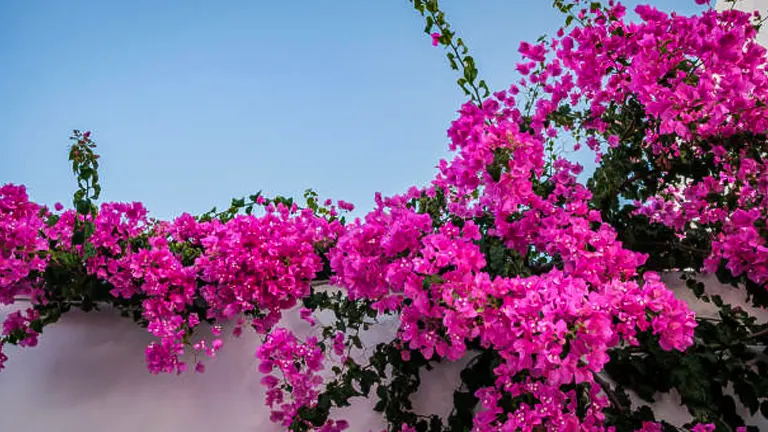
Proper spacing is crucial for ensuring that bougainvillea plants receive ample sunlight, air, and nutrients, which are essential for their growth, health, and blooming capacity.
Optimal Spacing Guidelines
To achieve a landscape that allows bougainvillea to thrive while minimizing disease and maximizing beauty, consider the following spacing guidelines, informed by horticultural best practices and scientific research:
| Planting Context | Spacing Between Plants | Notes |
|---|---|---|
| Garden Planting | 4-6 feet (1.2-1.8 meters) | Ensures adequate air circulation and access to sunlight. |
| High-Density/Orchard | 2-3 feet (0.6-0.9 meters) | Suitable for creating a dense floral display or hedge. Adjust based on variety. |
| Container Planting | Single plant per large container | Containers should be large enough to accommodate root growth, with drainage. |
Scientific Analysis and Environmental Considerations
- Sunlight Penetration: Bougainvillea requires at least 6 hours of direct sunlight daily for optimal bloom production. Spacing should be adjusted based on the garden’s orientation and shadow patterns to maximize light exposure.
- Air Circulation: Proper spacing reduces the risk of fungal diseases by allowing air to circulate freely around each plant. A study published in the “Journal of Plant Pathology” highlights the correlation between plant density, humidity levels, and the incidence of fungal diseases in bougainvillea.
- Nutrient Access: Adequate space between plants ensures that each bougainvillea has access to the necessary nutrients without competition. Soil testing can offer insights into nutrient distribution and help guide fertilization strategies.
- Water Requirements: Bougainvillea prefers well-draining soil and is drought-tolerant once established. Spacing affects irrigation efficiency, particularly in high-density settings, where drip irrigation can ensure that water is delivered directly to the roots of each plant.
Advanced Planting Tips
- Root Space Analysis: For bougainvillea, root development is as crucial as above-ground growth. Ensure that spacing accommodates the spread of roots, which can extend beyond the canopy’s drip line, especially in mature plants.
- Growth Modification Through Pruning: Regular pruning not only shapes the plant but can also compensate for closer spacing by controlling size and encouraging upward rather than outward growth.
- Environmental Adaptation: Adjust spacing based on local environmental conditions, such as wind patterns and humidity levels. In areas prone to high winds, closer spacing can provide mutual support among plants.
The Best Time to Fertilize Bougainvillea

Fertilizing bougainvillea at the right time is pivotal for achieving a garden that bursts with color and life. Bougainvillea’s blooming and growth cycles are influenced by daylight exposure, temperature fluctuations, and regional climate conditions. A strategic approach to fertilization, informed by these factors, can significantly boost bloom quality and frequency.
Understanding Growth and Dormancy Cycles
Bougainvillea experiences active growth and dormancy phases, each requiring different fertilization approaches to support the plant’s health and flowering capacity:
- Active Growth Phase: Marked by leaf and stem development, followed by blooming. This phase responds well to increased fertilization.
- Dormancy Phase: A period of reduced growth, usually triggered by shorter daylight hours and cooler temperatures in non-tropical climates.
Optimal Fertilization Schedule
Incorporating these cycles into your fertilization schedule ensures that bougainvillea receives nutrients when it can best use them to grow and bloom:
| Season | Fertilization Strategy | Reason |
|---|---|---|
| Early Spring | Begin regular fertilization | Coincides with increased daylight; supports foliage and initial bloom development. |
| Growing Season | Fertilize every 4-6 weeks | Supports continuous bloom production and healthy growth. Adjust frequency based on plant response and weather conditions. |
| Late Fall | Reduce fertilization | Prepares plant for dormancy, avoiding excess foliage growth that won’t survive winter. |
| Tropical Climates | Year-round light fertilization | Supports constant growth and blooming, adjusting for rainy seasons to prevent nutrient washout. |
Tailoring Fertilization to Environmental Conditions
- Daylight Exposure: Longer daylight hours in summer stimulate blooming; adjust fertilization to support this natural cycle.
- Temperature: Bougainvillea thrives in warm conditions. In cooler climates, reducing fertilizer as temperatures drop can prevent stress on the plant.
- Soil Conditions: Conduct soil tests to tailor fertilization not just to the time of year but to the specific nutrient needs of your garden’s soil.
Advanced Fertilization Tips
- Microclimate Adjustments: Observe how microclimates within your garden affect bougainvillea growth. Areas with more sun may require more frequent fertilization compared to shaded areas.
- Rainfall Considerations: In regions with heavy rainfall, additional fertilization may be necessary to replace nutrients washed out of the soil.
- Bougainvillea Varieties: Different varieties may respond uniquely to fertilization. Keep notes on how each variety in your garden reacts to adjust your approach as needed.
How to Fertilize Bougainvillea
Step 1: Choose the Right Fertilizer
- Type: Select a fertilizer that has a higher phosphorus content relative to nitrogen and potassium (e.g., 10-20-10 NPK ratio) to encourage blooming.
- Form: Decide between granular, liquid, or slow-release fertilizers based on your preference and the needs of your plant. Granular and slow-release fertilizers offer nutrients over time, while liquid fertilizers provide immediate benefits.
Step 2: Test the Soil (Optional but Recommended)
- Conduct a soil test to determine the current nutrient levels and pH. This step helps tailor the fertilization process to the specific needs of your bougainvillea, ensuring optimal growth conditions.
Step 3: Water Your Bougainvillea
- Before applying fertilizer, water the plant thoroughly. This pre-moistening process prevents root burn and ensures the soil is receptive to the new nutrients.
Step 4: Apply the Fertilizer
- Granular and Slow-Release Fertilizers: Spread the granules evenly around the base of the plant, extending to the drip line (the outer edge of the plant’s canopy). Avoid piling fertilizer against the stem or leaves.
- Liquid Fertilizers: Dilute the fertilizer according to the package instructions and apply it to the base of the plant, ensuring the roots are well-covered.
Step 5: Water Again
- After applying the fertilizer, water the plant lightly. This second watering helps integrate the fertilizer into the soil, allowing the nutrients to start making their way to the plant’s root system.
Step 6: Monitor and Adjust
- Observe your bougainvillea’s response to the fertilization over the following weeks. Healthy growth and increased bloom production are good indicators that your plant is benefiting from the treatment.
- If you notice signs of over-fertilization (e.g., leaf burn, sudden drop in blooms), reduce the frequency or amount of fertilizer.
Step 7: Maintain a Regular Fertilization Schedule
- During the growing season, fertilize every 4 to 6 weeks. Adjust based on the plant’s response and the fertilizer type.
- As the plant approaches dormancy (typically in late fall), reduce the frequency of fertilization to prepare it for rest.
Step 8: Consider Supplemental Micronutrients
- If your soil test indicates deficiencies in micronutrients like magnesium, calcium, or iron, consider using a supplementary micronutrient spray or adding these elements to your fertilization routine.
Step 9: Adjust for Climate and Environment
- In tropical climates where bougainvillea grows year-round, adopt a lighter, more frequent fertilization schedule to support continuous growth and blooming.
- For bougainvillea in containers, ensure the potting mix is well-draining and fertilize more frequently due to the limited soil volume.
Step 10: Record Keeping
- Keep a fertilization log including dates, fertilizer types, and plant responses. This record helps refine your fertilization strategy over time, catering specifically to your garden’s conditions and your bougainvillea’s needs.
Final Tips
- Always read and follow the fertilizer package instructions for the best results.
- Consider the environmental impact of your fertilization choices, opting for organic fertilizers when possible to promote soil health and sustainability.
Pruning Techniques for Bougainvillea
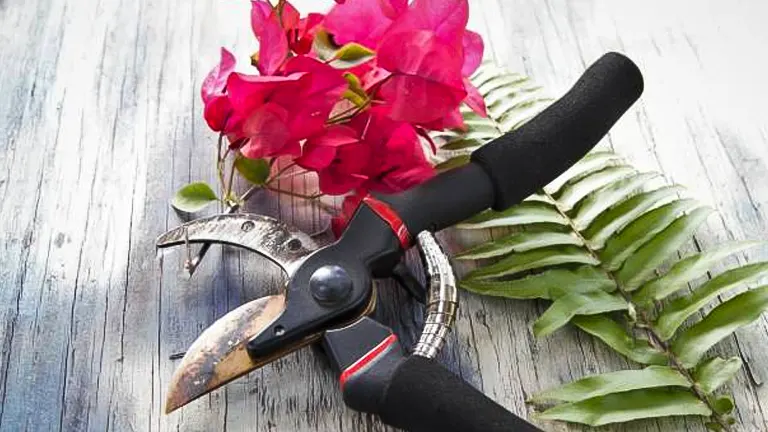
Pruning is an essential aspect of bougainvillea care, particularly in managing its size and promoting blooms. Pruning should be done in late winter or early spring, just before the new growth begins. This timing allows gardeners to shape the plant and remove any dead or overgrown branches, encouraging healthier growth and more flowers.
- Selective Pruning: Instead of cutting back the entire plant, selectively prune branches that are out of place or have grown too long. This encourages the plant to produce new growth, which is where flowers will appear.
- Shaping: Bougainvillea can be trained to grow in specific forms, such as trellises, walls, or as standalone bushes. Use pruning as a tool to direct growth and maintain the desired shape.
- Deadheading: Regularly removing spent blooms can stimulate the plant to produce more flowers. This practice keeps your bougainvillea looking vibrant and well-maintained.
Aftercare and Maintenance
After fertilizing and pruning your bougainvillea, consistent aftercare is crucial to ensure your efforts yield the desired results. This involves monitoring the plant’s response to fertilization, adjusting water and sunlight exposure, and being vigilant about potential pests and diseases.
- Monitoring Plant Health: Observe your bougainvillea’s reaction to fertilization. Healthy, vibrant green leaves and an increase in flower production are good indicators. If you notice signs of distress, such as leaf burn or wilting, reassess your fertilization routine and make adjustments as necessary.
- Watering Practices: Bougainvillea thrives with less water than you might think. Overwatering can lead to root rot and other issues. Water only when the top inch of soil is dry, ensuring deep irrigation that encourages strong root development.
- Sunlight: These plants love the sun. Ensure your bougainvillea gets at least 6 hours of direct sunlight daily to support robust flowering. If you’re growing bougainvillea in a less sunny region, positioning it in the sunniest spot available is key.
- Pest and Disease Management: Keep an eye out for common issues like aphids, spider mites, and fungal diseases. Early detection and treatment are essential for maintaining plant health. Use gentle, eco-friendly pest control methods to address any issues without harming the plant or beneficial insects.
Maximizing Blooms: Beyond Fertilization
While proper fertilization is critical, several other factors can influence your bougainvillea’s blooming potential. Here are additional tips to ensure your plant is not just surviving but thriving and producing abundant blooms.
- Optimizing Soil Conditions: Bougainvillea prefers well-draining soil with a slightly acidic to neutral pH. Amend heavy clay soils with sand or peat moss to improve drainage. A layer of mulch can help retain soil moisture and regulate temperature, benefiting root health.
- Enhancing Sun Exposure: If possible, position your bougainvillea in a location where it can bask in full sunlight. Sunlight is a key ingredient in the recipe for abundant blooms. For potted plants, rotating the pot periodically ensures all sides receive equal light, promoting even growth and flowering.
- Practical Mulching: A thin layer of mulch around the base of your bougainvillea can help conserve soil moisture and keep roots cool. Be mindful not to pile mulch against the stem, as this can encourage rot.
- Understanding Stress Flowering: Interestingly, bougainvillea flowers best when slightly stressed, typically from heat, sunlight, and dry conditions. While it’s important not to over-stress your plant, finding that balance can lead to impressive blooms.
Related Post
- How to Fertilize a Mango Tree Effectively: Tips and Tricks for Healthy Growth
- How to Fertilize Apple Trees: Essential Tips for a Bountiful Harvest
- How to Fertilize Lemon Trees: Secrets for Thriving Citrus
- How to Fertilize Avocado Tree: A Step-by-Step Guide for Lush Growth
Conclusion
Cultivating bougainvillea that captivates with its stunning blooms is a rewarding endeavor that requires attention to detail and an understanding of the plant’s needs. From selecting the right fertilizer to mastering the timing of application, each step plays a crucial role in nurturing healthy, vibrant plants. Remember, bougainvillea thrives on a balance of care—too little attention and it may struggle, but too much, especially in terms of water and fertilizer, can hinder its blooming potential.
Embrace the joy of gardening by observing your bougainvillea’s response to your care routine, adjusting as needed, and celebrating the vibrant blooms that your efforts yield. With patience and persistence, you can transform your garden into a dazzling display of bougainvillea’s natural beauty.
FAQs
- What type of fertilizer is best for bougainvillea in containers versus planted in the ground?
For container-grown bougainvillea, use a water-soluble or liquid fertilizer to ensure even distribution of nutrients in a confined soil area. In-ground bougainvillea benefits from both slow-release granular and liquid fertilizers, allowing for deeper nutrient penetration and broader feeding area. - Can I use a bloom booster fertilizer on my bougainvillea, and when should I apply it?
Yes, a bloom booster fertilizer, high in phosphorus, can help encourage more vibrant blooms. Apply it at the beginning of the blooming season and once more at the peak of summer to support continuous flowering. - How do I correct yellow leaves on my bougainvillea after fertilizing?
Yellow leaves post-fertilization could indicate over-fertilization or a nutrient imbalance. Flush the soil with water to remove excess fertilizer and wait a few weeks before applying a balanced, mild fertilizer again. Ensure the plant is getting enough water and sunlight. - Is it necessary to alter fertilization practices for bougainvillea in different climates?
Yes, bougainvillea in hotter, drier climates may require more frequent fertilization with careful water management, while those in cooler or more humid regions benefit from less frequent feeding to prevent overgrowth and encourage blooming. - How can I ensure my bougainvillea absorbs the fertilizer effectively?
Water your plant thoroughly one day before applying fertilizer. This preps the soil and roots for nutrient uptake. After fertilizing, lightly water the area again to help dissolve and distribute the fertilizer into the soil. - Should I fertilize my bougainvillea during its dormant period?
During dormancy, usually in cooler months, reduce fertilization significantly or pause it altogether. Over-fertilizing during this time can lead to unnecessary leaf growth at the expense of blooms in the growing season. - What’s the best way to fertilize bougainvillea grown as a bonsai?
For bonsai bougainvillea, use a half-strength liquid fertilizer to avoid over-concentration of nutrients, which can harm the miniature plant. Fertilize sparingly, focusing on the growth and blooming periods, and always ensure the soil is moist before application. - How long after planting bougainvillea should I wait before fertilizing?
Allow your bougainvillea to adjust to its new environment for 4-6 weeks before introducing fertilizer. This waiting period helps the plant establish roots and reduces stress, making it more receptive to nutrients when you do start fertilizing.
This guide is designed to offer you essential tips for properly fertilizing bougainvillea, guiding you towards nurturing your bougainvillea plants to their fullest potential. Here’s to a garden brimming with vibrant, thriving bougainvillea!

Kristine Moore
Forestry AuthorI'm Kristine Moore, a seasoned garden landscaping professional with over 30 years of experience. My extensive career has been dedicated to transforming outdoor spaces into stunning, sustainable landscapes. With a deep understanding of horticulture, design principles, and environmental stewardship, I have become a respected figure in the field, known for creating harmonious, visually appealing, and eco-friendly gardens. My commitment to excellence and continuous learning in landscaping trends and techniques has solidified my reputation as an expert in garden design and implementation.
3 comments
Thanks for the good tips
Charles
April 18, 2024 6:14 amThankyou very much! Will implement and apply your advice in springtime. Will just prune now. Thanks for information on how & why.













I stop every time I starting to fill the application due to endless details to be filled, for example we are active in automotive spare parts, then we have to tick which section we are interested then which item etc, etc, i think to tick spare parts and other sub-directory would be enough and every time i would end terminating the process without sending it and don't know what Todo.
OMAR BAHLEWA
April 20, 2024 4:22 am